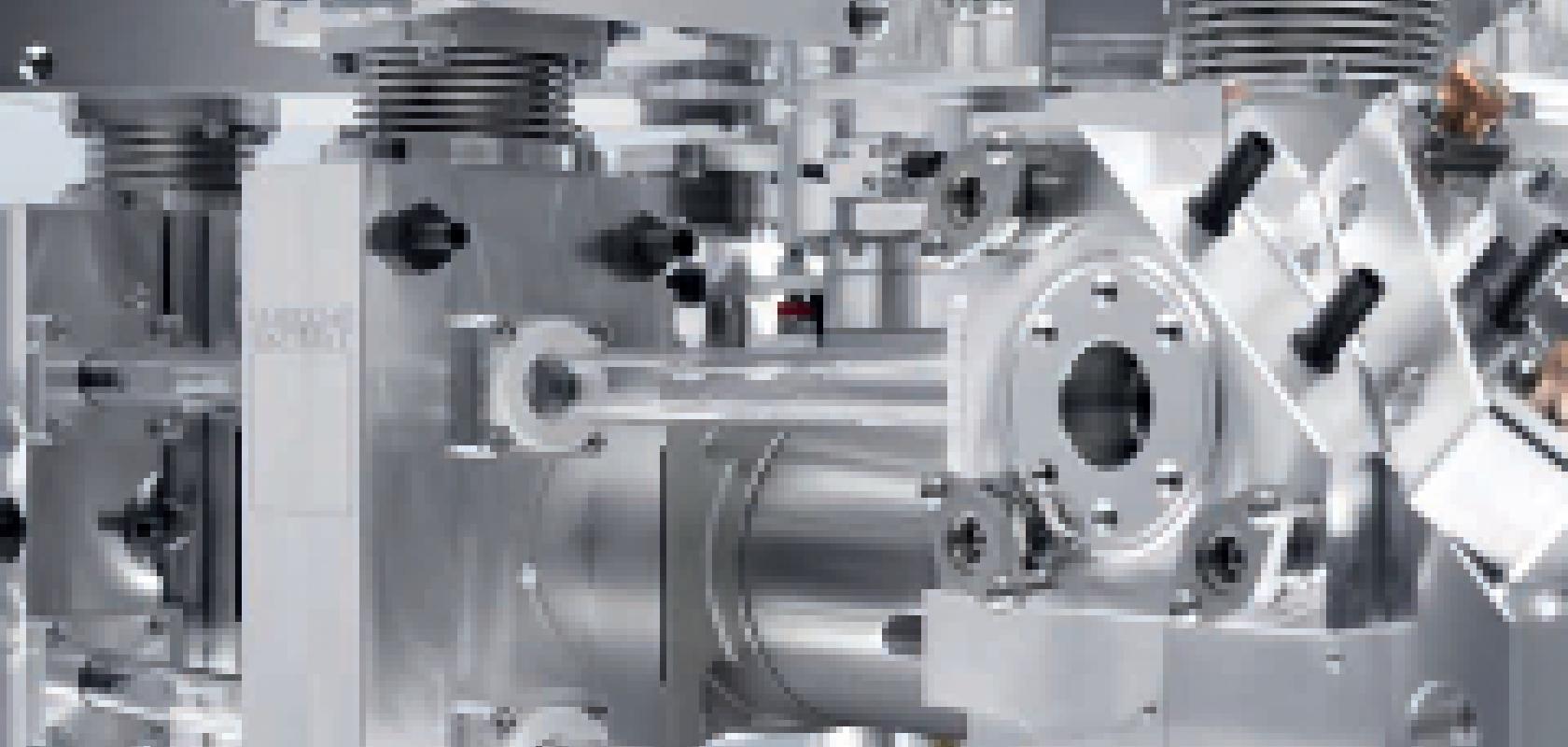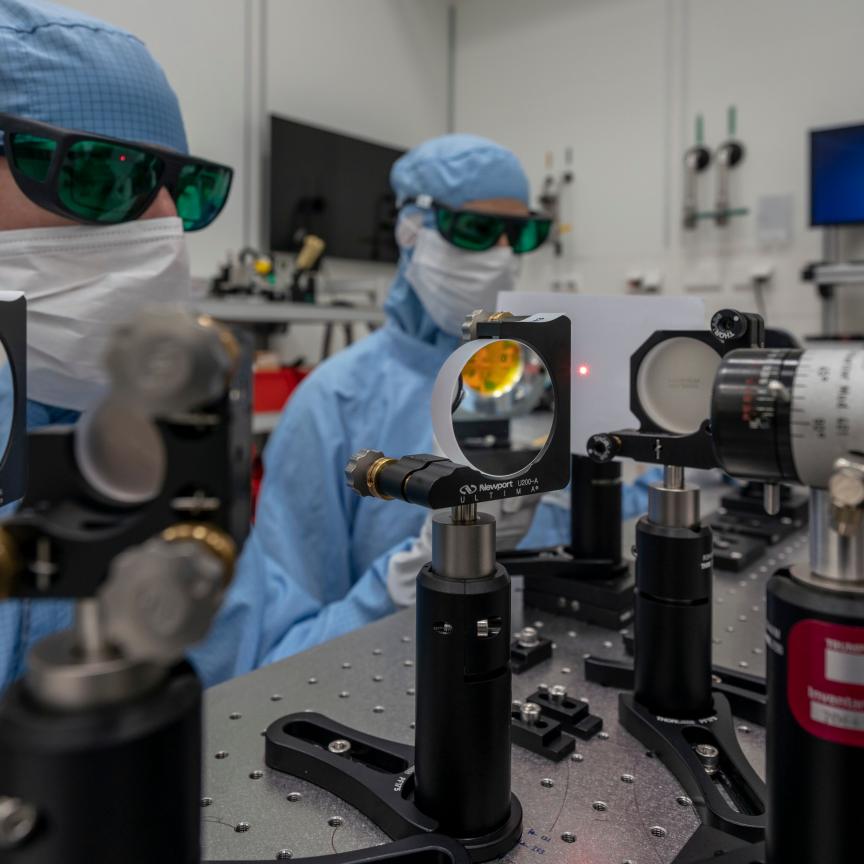Optimisation, experts say, is one of the key areas that is going to ensure that CO2, despite its lower power efficiency and limited installation flexibility, will retain a leading position in the gamut of laser processes available to the manufacturer.
Competitive technologies, fibre and disk, offer higher power efficiencies and are able to emit a lot of power from a very small aperture, providing a high brightness. The disk laser now dominates welding and non-ferrous, brass, copper and aluminium applications.
For cutting metal sheeting at thicknesses of up to 4mm, fibre lasers are recommended. This is because of the reduced power consumption, while their high brightness makes it easier to focus their energy to a sharp point. The fibre laser does well with metal, because metals absorb the laser’s 1μm wavelength more efficiently than the 10.6μm wavelength that CO2 emits as standard. Fibre is therefore gaining market share and displacing flowing gas CO2 lasers where flat bed sheet metal processing is concerned. Trumpf laser product manager Gerry Jones says: ‘[Fibre] is now giving the customer a choice for metals thinner than 4mm.’ And carbon dioxide is deemed to have an inferior focusing quality compared to fibre lasers.
Where CO2’s far infrared 10.6μm wavelength has an advantage is with some non-metal materials. CO2’s laser light is readily absorbed by non-metals such as glass, ceramics, polymers, and organics such as wood or paper. However, CO2 has lost territory in this domain, because diode lasers are viewed as a good option for plastics welding, brazing and heat treatments. Improvements in brightness and beam quality have been key advances for direct diode lasers in displacing CO2 from these activities. Another more mundane reason why companies may not select CO2 is that their local power substation may not be able to deliver the power necessary.
Yet despite all the advantages other lasers have, CO2 is expected to reign supreme with cutting metal for some time to come. The 10.6μm wavelength of the CO2 laser produces a smoother cut with metal thicknesses as high as 30mm of steel. It produces a smoother cut, because the cutting gap is wide enough for the use of gas to blow the molten metal out, stopping it from absorbing the incoming laser light and reducing its cutting effectiveness.
For Rofin’s managing director Andrew May, another important factor in CO2’s favour is the fact that users can employ wavelength optimisation. May explains that by modifying the laser tube, an output can be generated at any of the wavelengths that CO2 transitions allow, ranging from about 9.2 to 11.4μm. While 10.6μm is standard, users can also choose 9.3 or 10.25μm, which offer advantages for applications such as the processing of plastic polyethylene terephthalate, known as PET. ‘We can tune the sources to operate at 9.3μm to achieve significantly better perforation rates in PET,’ says May.
Other methods of optimisation of CO2 lasers, for flowing gas at least, is the changing of the tube length, diameter and wall temperature; the gas mixture, pressure, and flow speed; the optical mode control, wavelength control, and output coupling; and electrical discharge control and current density. With these changes multimode and single power can be optimised along with efficiency.
Beyond application specific wavelength tuning other substantial reasons that can swing investment decisions for choosing CO2 over solid state include basic installation decisions. High-power fibre lasers have to be enclosed providing no cost advantage. Solid state lasers use metal enclosures with a small, expensive laser-safe glass viewing window while CO2 can use a cheaper eye safe, class-1 enclosure using transparent thermoplastics such as Perspex.
While fibre has been sold on the fact that it has an inherent flexibility, the arrival of sealed CO2 has meant that one more solid state advantage has been diminished. Sealed CO2 can be mounted on a robot arm just as fibre can. For fibre lasers, capital costs are 10 to 15 per cent more for a 3kW fibre laser than the equivalent 5kW CO2 laser. Lifetime costs, though, are significantly less expensive for fibre lasers. And while fibres do use less electricity, they consume more cutting gas.
Dr John Powell is technical director at Laser Expertise, a laser-cutting consultancy and job shop based in Nottingham. He is also a senior member of the Association of Industrial Laser Users and his view is that job shops should opt for CO2 lasers for the bulk of their work and use a fibre laser where appropriate on thinner metals. He said: ‘A fibre laser might be a good choice for the 3rd or 4th machine.’ He also gives the example of makers of fridges and other appliances, where thin metals are used, saying fibre would be a good choice for them.
Powell sees further issues with fibre. He explains that it is very new and reported maintenance costs and downtime are at the moment very low, but in future the industry will see more non-laser related downtime. For Powell, fibre laser owners will get bigger bills as the lasers get older and that for metals greater than four or five millimetres thick, there is no speed advantage. Also, with fibre the cut quality is inferior to CO2.
Another major advantage CO2 has, according to Powell, is that a lot of stainless steel is covered in plastic and CO2 can cut effectively both this and the underlying metal. Fibre lasers have difficulty in cutting some of these plastic coverings, because the material does not readily absorb the fibre laser’s wavelength. Some manufacturers have to carry out the operation twice, once with the laser defocused to melt through the plastic and then focused to cut the steel.
This plastic melting leaves traces of melted plastic 2mm either side of the cut line. Powell says: ‘You can take it off with your thumb, but it’s not helpful with hundreds of metres of material.’ Jones agrees: ‘There is some work to be done to get disk lasers working well enough for plastic coated steel. The plastic is there to avoid scratches. Solid state does not perform at all [for this]. They have the wrong wavelength for plastic absorption.’
At the other end of the spectrum, lower power applications from 10 to 500W, remain a high market growth area for CO2 lasers. This is because so many materials that can be processed with these power levels will readily absorb CO2’s wavelength of 10.6μm.
The processing of materials such as glass, ceramics, polymers and organics like textiles, wood or paper are all applications where businesses can take advantage of the low-cost per Watt and the high absorption at 10μm, compared to their solid state alternatives, which CO2 systems can provide. Andrew Held, Coherent marketing director, says: ‘We have not seen competition from fibre [for non-metals], however, if we are supplying solely for cutting thin metal then fibre has the advantage.’ In most applications below 1kW, CO2 and fibre lasers are complementary technologies rather than competing.
Coherent markets its 20W to 1kW CO2 lasers for metals and non-metal processes including glass, acrylics, plastics, textiles, wood and paper. It finds that as well as a cost advantage its customers have a ‘high comfort level’ with CO2, because it is a mature, established technology.
The new materials such as film and glass composites and the likes of synthetic leather also mean that low power CO2 continues to have growing markets in the processing industries. Fibre lasers are not able to process these non-metal materials. Leather is an example where the fibre laser wavelength
(1μm) is not absorbed while the 10μm wavelength from a CO2 laser is strongly absorbed. Held gives the example of the shoe industries’ soft materials and its intricate designs that require the use of CO2 lasers for cutting operations. The same laser used to cut intricate patterns and holes into the leather are also used to engrave and mark the shoes. The CO2 laser, in this particular industry, offers the process flexibility needed to adapt quickly. CO2 laser leather cutting is an economic alternative for short run processing. While the processing of these materials would typically have used a lower power laser ranged in the tens of or hundreds of Watts, systems delivering 1kW are now being invested in. The higher power fully sealed lasers offer higher processing speeds.
Another advantage the slab laser has is allowing small job shops to reduce the variety of systems they have to invest in. For example, the job shop that does 80 per cent of its work with non-metals and perhaps 20 per cent with metal, can buy CO2 knowing that the higher power can cut both and achieve high throughput with non-metals. Held points out that previously the job shops would have had to farm that metal work out, but now they can bring it in house.
And this lower cost is despite solid state lasers having around 2.5 times higher power efficiency, reducing the power required. May agrees: ‘From my experience of low power CO2, fibre lasers are not in the game.’
Carbon dioxide has faced challenges on many fronts by solid state and diode lasers, but this mature technology that has competitive total system costs and a wavelength that has inherent advantages is not about to be pushed out of its key markets anytime soon.


